Where to position a fridge for a practical kitchen that's easy to navigate
An essential piece of kitchen kit, get its location right and everyone in the house will be happy
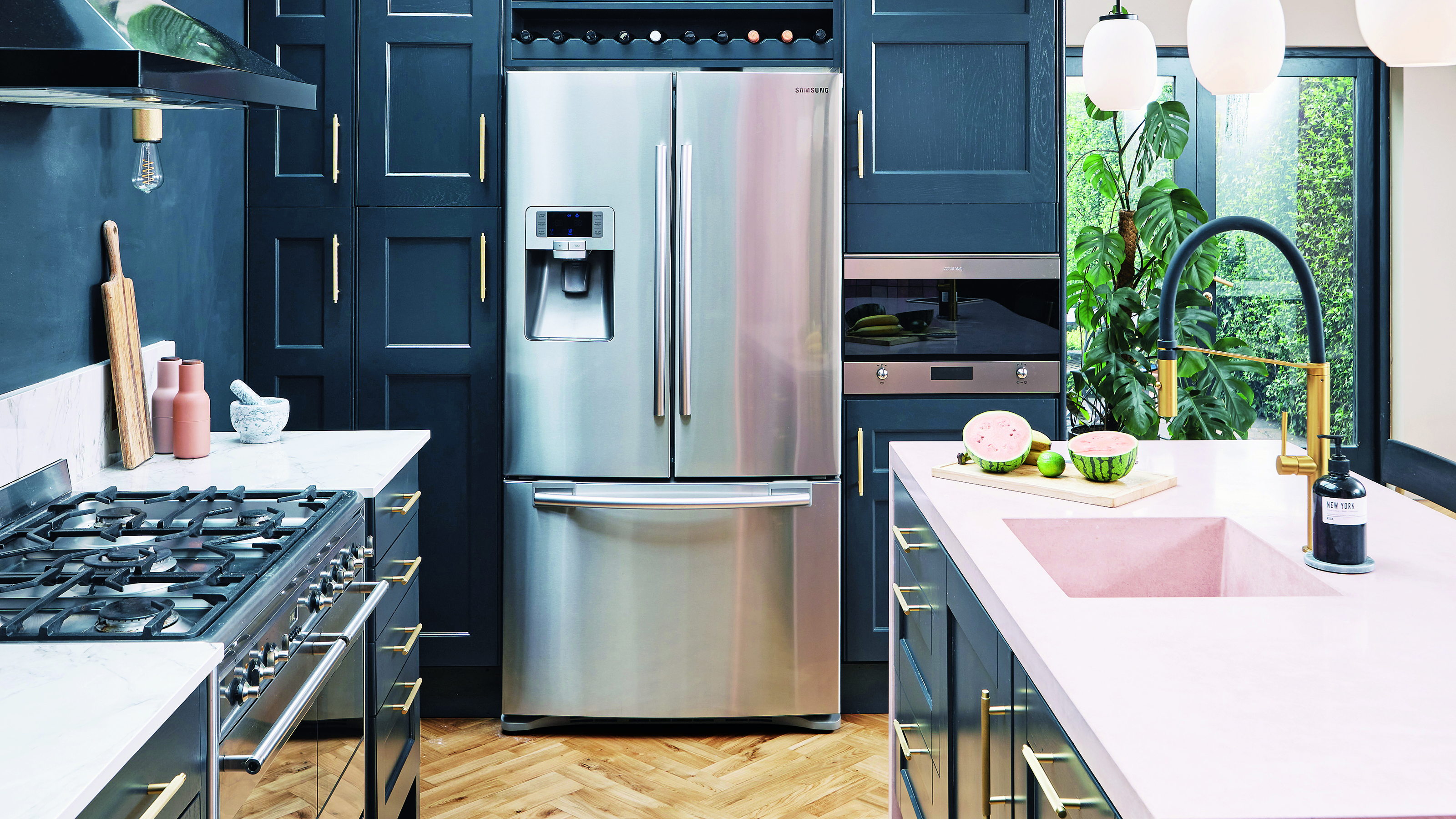

Picture the scene: you’re busy in the kitchen, the kids are running in and out to grab drinks from the fridge, other family members are perusing snacks because they’re a bit peckish and, if you’re entertaining, guests may even be helping themselves to top ups. If your fridge is located right where you’re prepping, this traffic may well be getting under your feet. Annoying? Yes, probably.
When planning kitchen appliance layout ideas, it’s wise to carefully consider where your fridge will go right from the start. Of course, you need easy access for cooking, grabbing the milk and putting things away, but you also need it to be strategically placed so the area doesn’t become your home’s version of Piccadilly Circus.
‘It's important to avoid placing the fridge in high-traffic areas, especially if you have a busy family or entertain frequently,’ says Cassie Jones, brand manager at Masterclass Kitchens. ‘Keeping the fridge out of the main prep zones and busy pathways will enhance kitchen efficiency.'
Where to position a fridge in a kitchen
First and foremost, convenience is key. You want your fridge to be easily accessible from the cooking areas and where you prepare meals, but also for those times when you or anyone in the house needs to grab and go.
Think about the routes you might take through the kitchen when you’re cooking, packing lunches, baking or making a drink, as well as when you’re unloading shopping. You don’t want to be trekking all the way across the space every time you need an ingredient and you’ll likely need some worktop space nearby for loading and unloading too.
So, to make the most of your space and get the best out of your kitchen layout ideas, where is it best to position your fridge?
1. Think about the working triangle
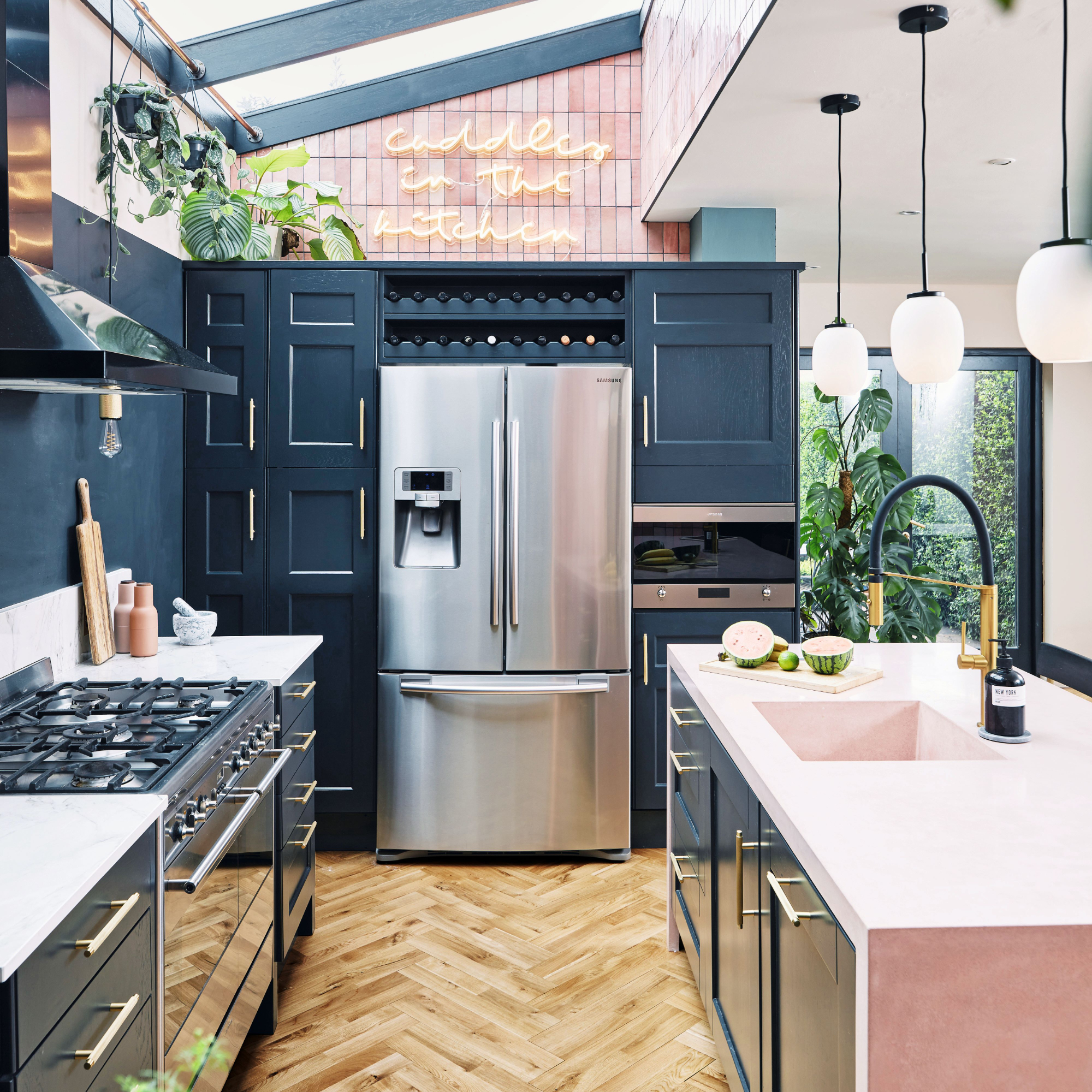
The working triangle is a tried and tested principle of kitchen design. Essentially, think of your oven, sink and fridge as the three points of a triangle. When they are placed in this format, your kitchen layout should be efficient and easy to manoeuvre around.
Get the Ideal Home Newsletter
Sign up to our newsletter for style and decor inspiration, house makeovers, project advice and more.
‘Deciding on the placement of your oven and sink is crucial when determining the best location for the fridge,’ explains Cassie. ‘Ideally, the fridge should be positioned near the food prep area. If your design includes a corner pantry, placing the fridge close by ensures easy accessibility and a more enjoyable cooking experience.’
For maximum convenience and where space allows, aim to position the fridge within a few steps of the main preparation and cooking area, but not too close so it disrupts the overall flow of the space.
2. Consider who lives in the house

While convenience and efficiency are key factors to consider when narrowing down your kitchen ideas and appliance choices, don’t forget about the people in your house – after all, they’re the ones that will be using the space every day and arguably, the fridge probably sees the most action of all the appliances, right?
Who uses the fridge most, when and what for? Do the kids run in from school and head straight for the snack drawer? Are you a keen cook and need easy access to ingredients? Do you love to entertain and are happy to let guests help themselves?
‘In a busy family kitchen, the fridge should be easily accessible for everyone, including children. Placing it near the entrance to the kitchen or close to a pantry can be a good idea. This way, kids can grab snacks without getting in the way of cooking,’ says Josie Medved, design manager at Symphony Group. ‘This setup allows family members to grab snacks without interfering with the cooking area.’
If you’re a keen cook, the fridge should be very close to the cooking areas to minimise the time spent fetching ingredients. ‘Then for someone who entertains often, consider a fridge that’s accessible from the dining area or even having an additional beverage fridge in the entertaining space,’ Josie suggests.
Doug Haswell, furniture manager at Caple agrees: ‘If you are not a cook but generally entertain you want to give the kitchen area an open feeling of space, so placing the fridge at the end of a run is preferable.’
3. Remember safety
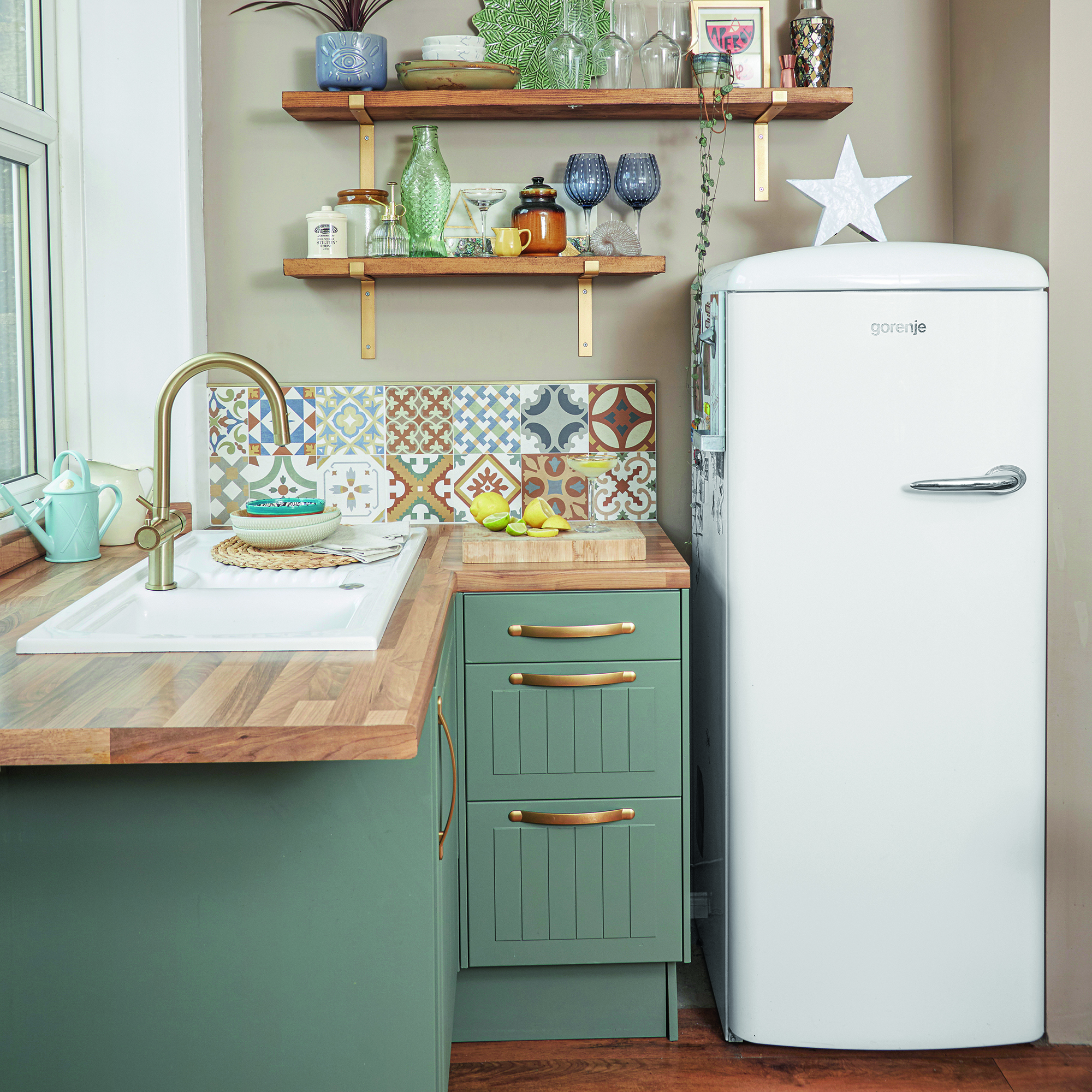
A fridge is an electrical appliance after all and, when complete with water and ice dispensers, will be fed by mains water too. So safety is key. A kitchen designer and appliance supplier will be able to advise on the best positioning when you come to buy your kit, but as a guide, avoid positioning the fridge next to a direct heat source like an oven, range cooker, radiant heat appliance like an Aga, or radiator.
‘Avoid anywhere in direct sunlight and other sources that generate heat as the fridge will have to work harder to stay cool and therefore wastes energy,’ says Doug.
4. Hide away the fridge
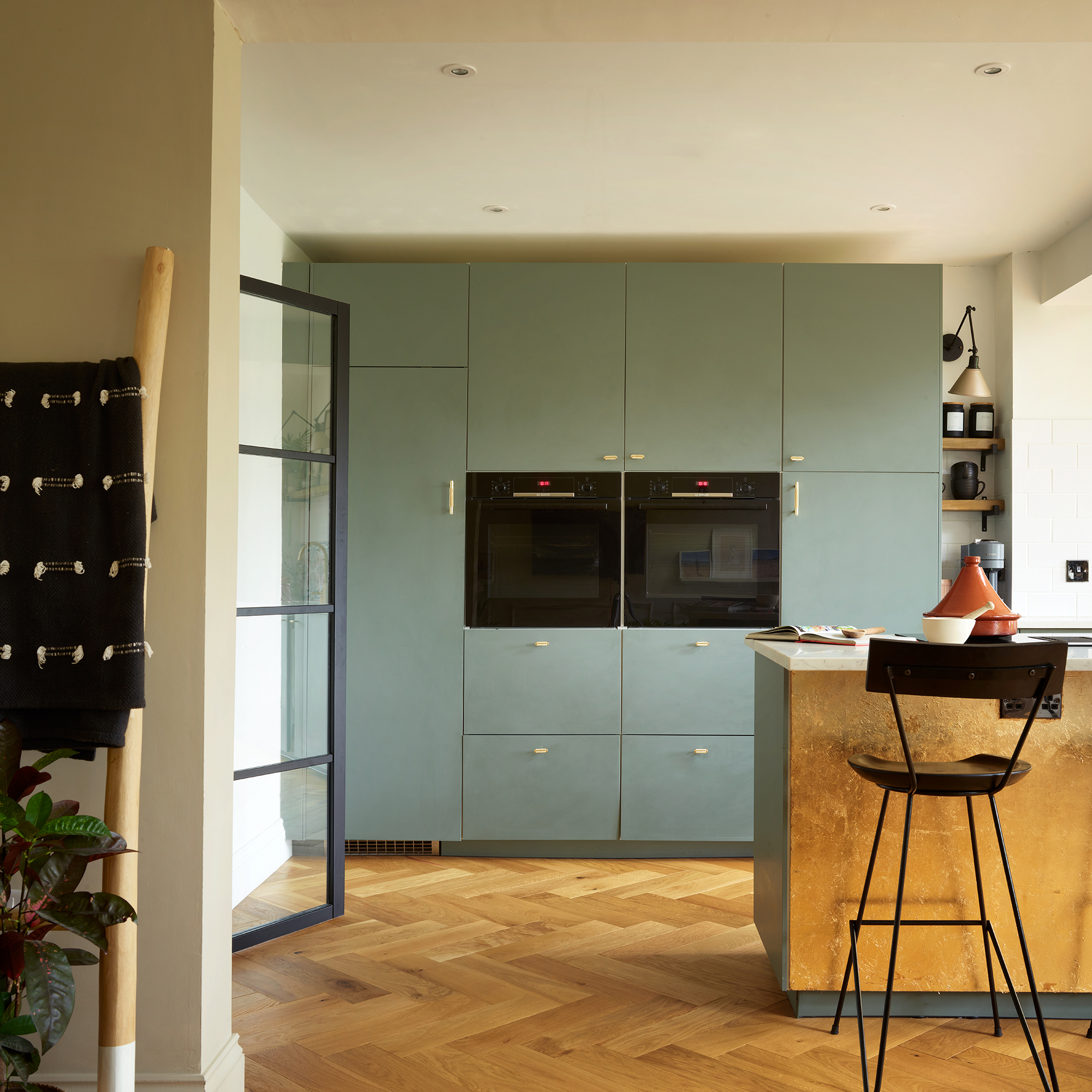
Not sure you want your fridge on show? ‘Integrated fridges are an excellent choice for those wanting a sleek, uncluttered kitchen design,’ says Cassie.
There are a couple of practicalities to remember here too though. ‘It's essential to ensure appropriate airflow at the top and bottom of the cabinetry to maintain the appliance's efficiency. These can be seamlessly integrated into the kitchen design, with metallic finishes to match other elements,’ Cassie explains.
Whether freestanding or integrated, the points above on the positioning of the fridge still apply, so figure out where a tall unit for a fitted fridge will work best in your layout.
5. Do the double
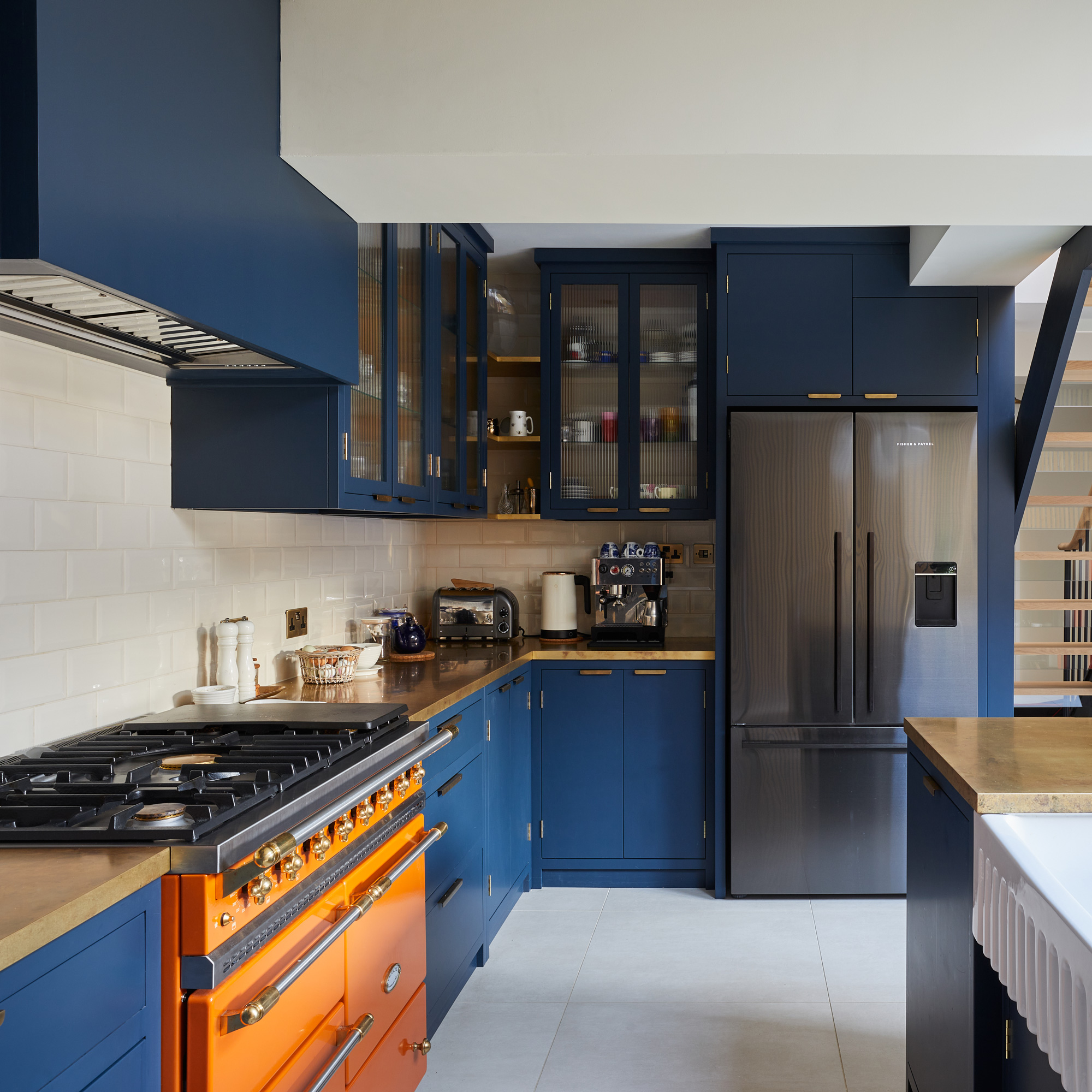
If budget allows and you’re in need of the extra cool kitchen storage space, having two fridges can be very beneficial. For example, you could have one for food and one for drinks, or simply have twice the space to cater to a large family or store in bulk. Where a double fridge-freezer, like an American-style design, won’t fit in your space, you could still achieve the storage space with one fridge within the kitchen and another located elsewhere.
‘Consider placing the second fridge in the pantry or utility room to maximise space in the main kitchen area,’ Cassie suggests.
‘Position them strategically – one near the prep area and the other in a more accessible spot for guests or bulk storage,’ adds Josie.
FAQs
Which direction should my fridge face?
The direction of your fridge depends on a few different factors: the space available in the kitchen layout, the main purpose of the fridge and who will most use it, plus how the space flows.
You don’t want the position or direction of the fridge to create a barrier within the space, block light or impede flow, so aim to place it where it won’t be too obtrusive but where it is still easily accessible – it’s a careful balancing act, we know.
In terms of practicality, think about which way you’d like the fridge door to open. Many single door designs allow you to swap the orientation to suit your kitchen layout and preference so keep an eye out for this feature when shopping. Also, make sure there’s enough room for the door to swing open and not block any walkways through the space.
Does a fridge have to be against the wall?
A fridge doesn’t have to be against a wall but it does need proper ventilation space around it. That’s the case whether it’s a tall freestanding fridge, an integrated design, a double door or an undercounter style.
‘Ensure there’s adequate clearance on all sides, and it should be near a power outlet. For plumbed-in fridges, access to a water line is essential,’ says Josie Medved, design manager at Symphony Group. ‘Proper housing will also allow for easier cleaning and maintenance access.’
Undercounter fridges or wine coolers can be ideally located within a kitchen island or within a peninsula and are ideal as secondary appliances if you have a larger fridge elsewhere in the kitchen. Or why not add an undercounter design to a utility room?
Ultimately, knowing where to position a fridge comes down to the shape, size and layout of your kitchen as well as your family needs. Plan with practicality in mind and your fridge layout will be a seamless part of your design.

Lindsay Blair is an editor, writer & content consultant with a focus on home design, interiors & lifestyle. Previously editor KBB Magazine and thesethreerooms.com, she has also contributed to The Times, Ideal Home, Build It & more.
-
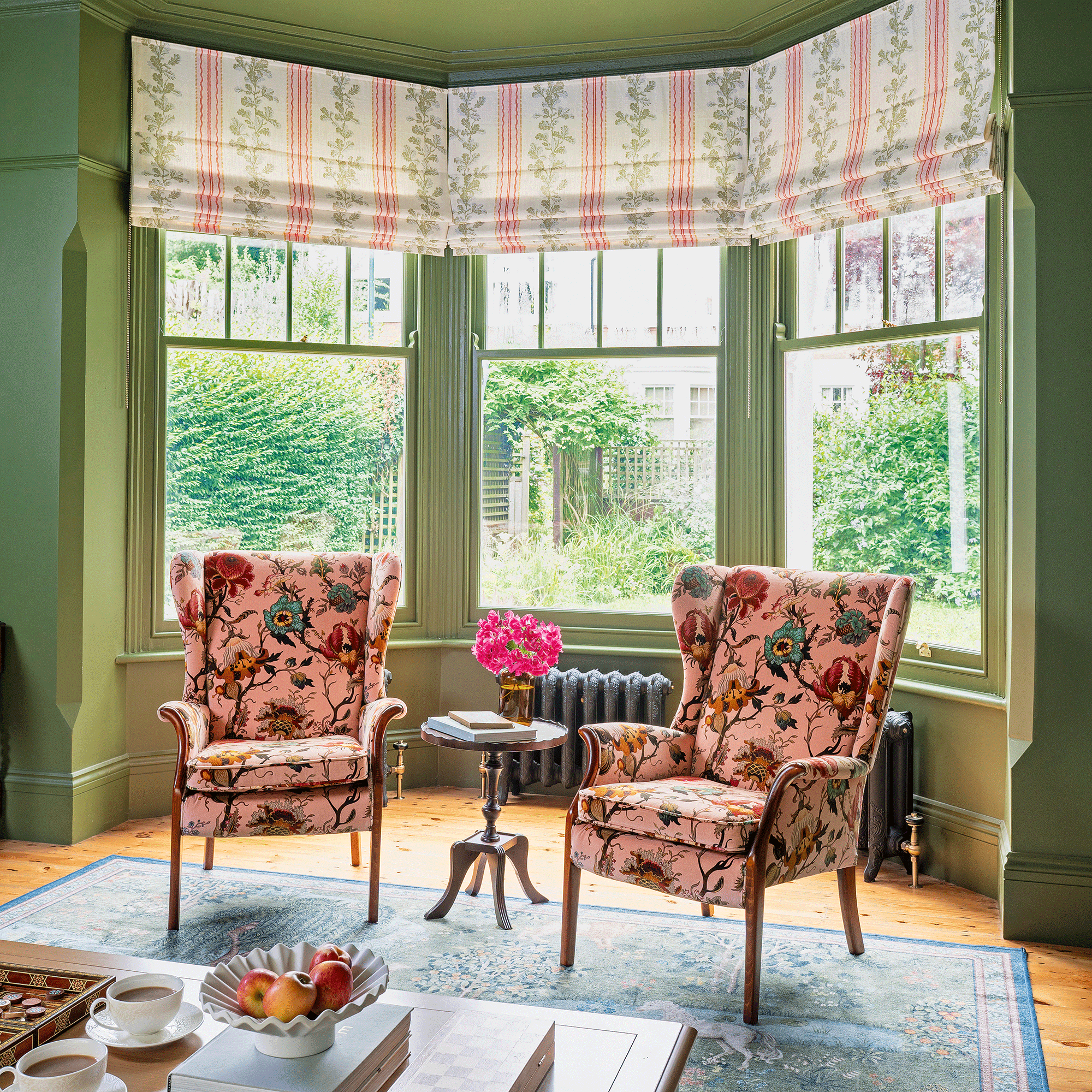 A strict colour palette and vintage finds have turned this semi-detached Edwardian house into an elegant family home
A strict colour palette and vintage finds have turned this semi-detached Edwardian house into an elegant family homeSticking to a three-colour palette of green, pink and yellow and mixing in plenty of vintage furniture and art has created an authentic period feel
By Stephanie Smith
-
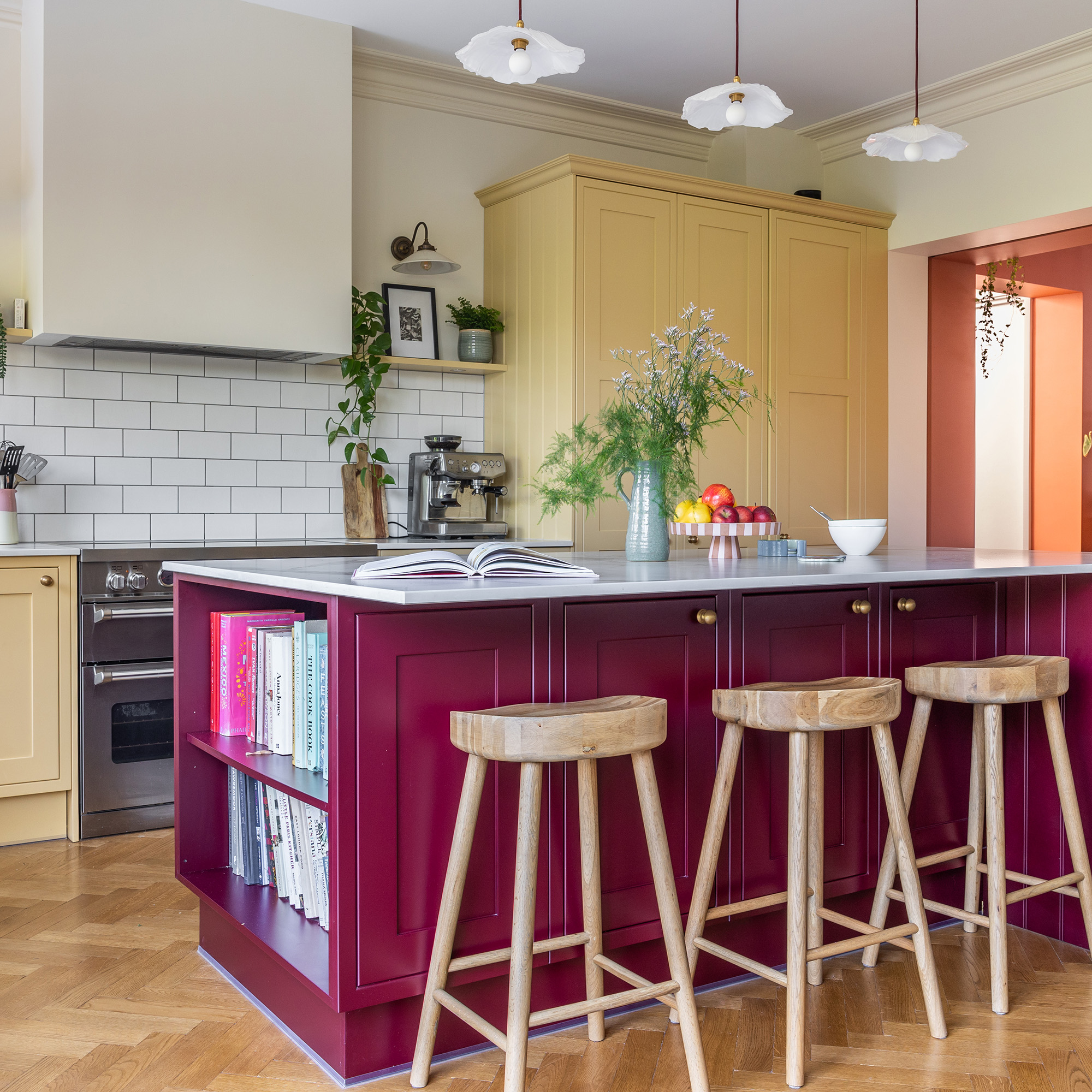 A top-to-bottom renovation has turned this Edwardian house into a lovely family home
A top-to-bottom renovation has turned this Edwardian house into a lovely family homeWith a few considered structural changes, this period house has been turned into a family home and has created a sanctuary for years to come
By Maxine Brady
-
 How to heat a conservatory
How to heat a conservatory7 practical options to consider for year-round comfort
By Amy Reeves